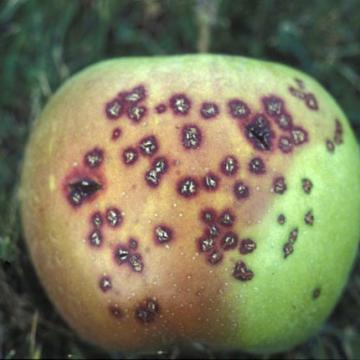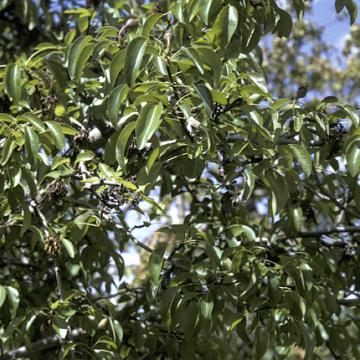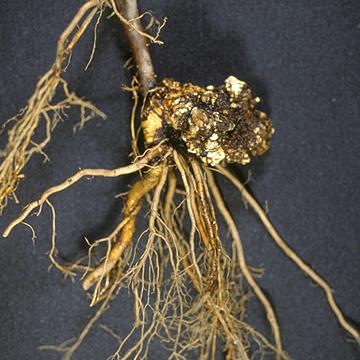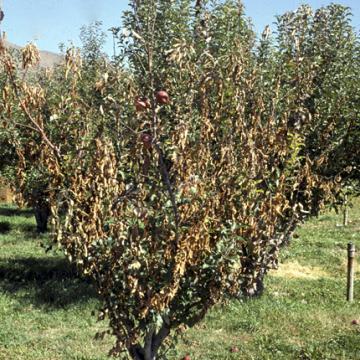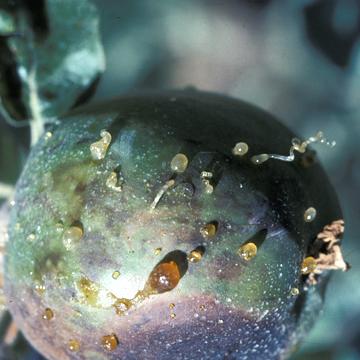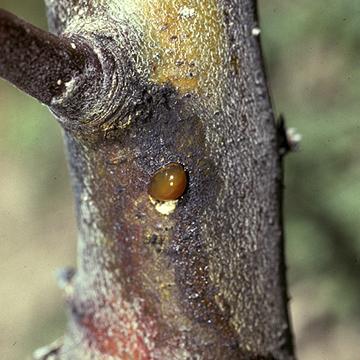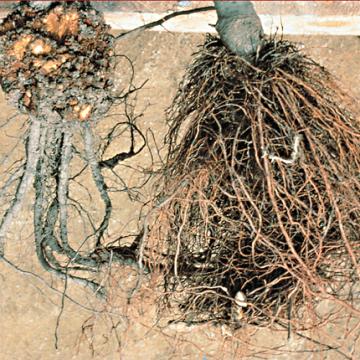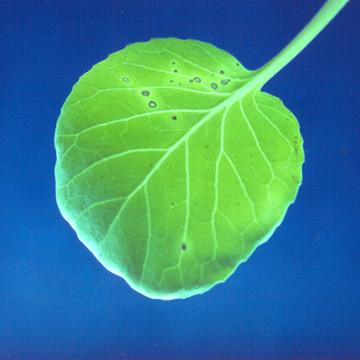DISEASE: Blister spot
HOST: Apple
Late stage of blister spot. The purplish black lesions are associated with lenticels and stomata.
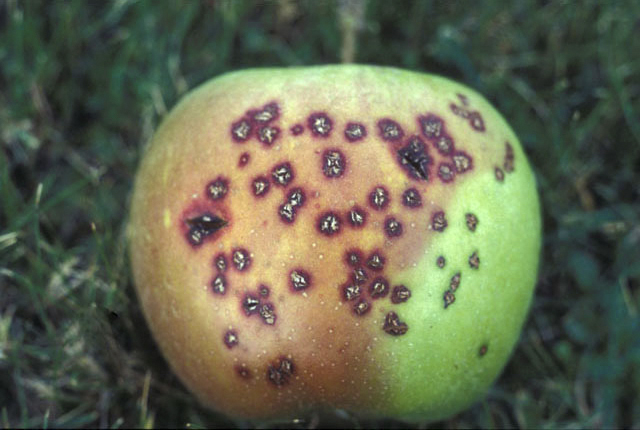
Blister spot | Apple
DISEASE: Blister spot
HOST: Apple (Malus domestica 'Crispin')
PATHOGEN: Pseudomonas syringae pv. papulans
SOURCE: T. Burr
DISEASE: Blossom blast
HOST: Apple
Many dead, shriveled flowers and young shoots. It differs from fire blight, with infections being relatively localized with the appearance of being "blasted".
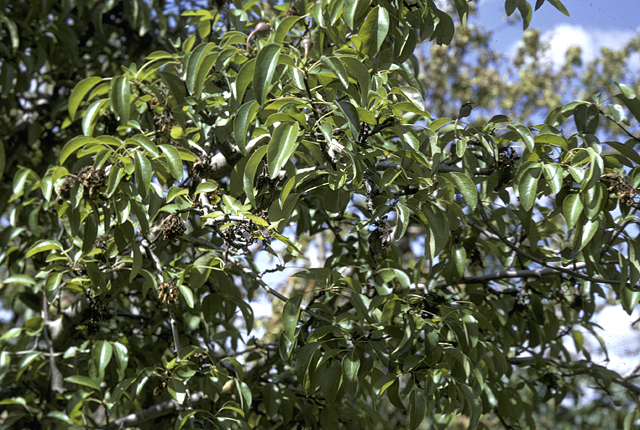
Blossom blast | Apple
DISEASE: Blossom blast
HOST: Apple (Malus domestica)
PATHOGEN: Pseudomonas syringae pv. syringae
SOURCE: M. Schroth
DISEASE: Crown gall
HOST: Apple
Crown gall of apple.
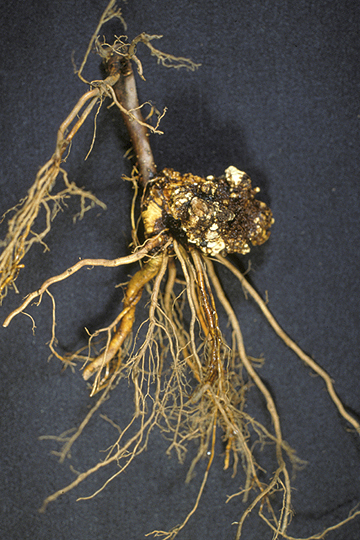
Crown gall | Apple
DISEASE: Crown gall
HOST: Apple (Malus domestica)
PATHOGEN: Agrobacterium tumefaciens
PATHOGEN SYNONYM: Rhizobium sp.
SOURCE: H. Sawada, M. Goto
DISEASE: Fire blight
HOST: Apple
Severe infection of apple with dying twigs and branches.
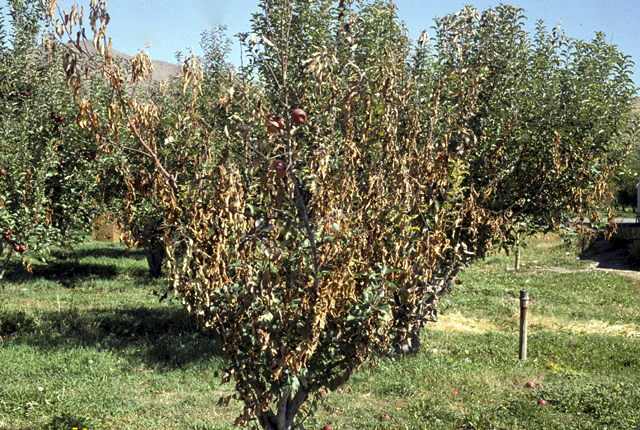
Fire blight | Apple
DISEASE: Fire blight
HOST: Apple (Malus domestica)
PATHOGEN: Erwinia amylovora
SOURCE: S. Thomson
DISEASE: Fire blight
HOST: Apple
Diseased apple with copious ooze.
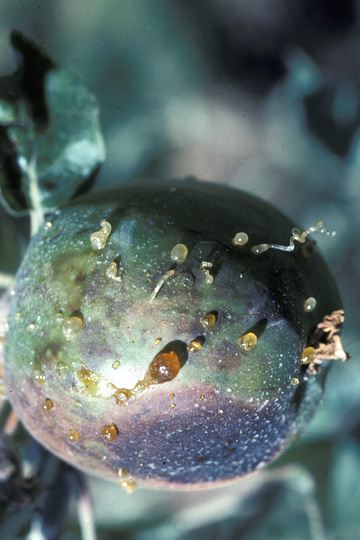
Fire blight | Apple
DISEASE: Fire blight
HOST: Apple (Malus domestica 'Jonathan')
PATHOGEN: Erwinia amylovora
SOURCE: S. Mohan
DISEASE: Fire blight
HOST: Apple
Canker on trunk oozing fire blight bacteria.
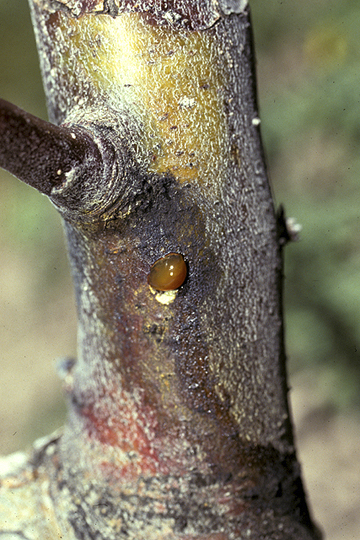
Fire blight | Apple
DISEASE: Fire blight
HOST: Apple (Malus domestica)
PATHOGEN: Erwinia amylovora
SOURCE: S. Thomson
DISEASE: Hairy root
HOST: Apple
Crown gall (left) and hairy root (right) caused by Agrobacterium tumefaciens and A. rhizogenes, respectively.
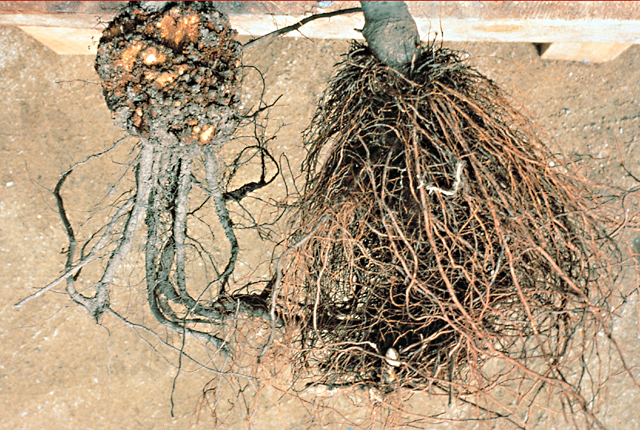
Hairy root | Apple
DISEASE: Hairy root
HOST: Apple (Malus domestica)
PATHOGEN: Agrobacterium rhizogenes
PATHOGEN SYNONYM: Rhizobium sp.
SOURCE: APS
DISEASE: Xanthomonas leaf spot
HOST: Cabbage
Cabbage leaf with small lesions. Lesions may enlarge and coalesce, causing distortion. Stem lesions are black and sunken and may cause death of the plants.
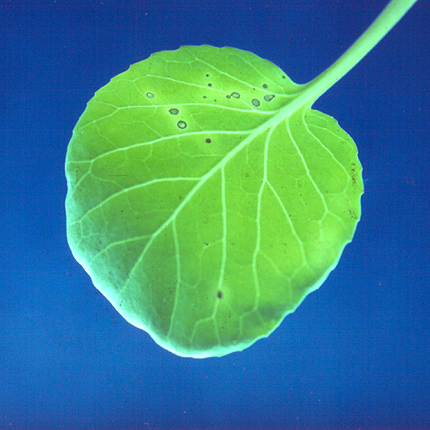
Xanthomonas leaf spot | Cabbage
DISEASE: Xanthomonas leaf spot
HOST: Cabbage (Brassica oleracea var. capitata)
PATHOGEN: Xanthomonas campestris pv. raphani
SOURCE: R. Gitaitis


